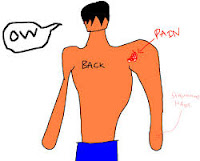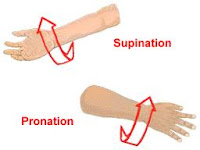The fourth finger is not weak; it is misunderstood. It can feel just as "strong" as the other fingers if used according to its design.
 No amount of so-called strength-training exercises will produce positive results, but will more likely cause harm. The fingers are not independent agents, but they can sound that way if it is understood how to use the finger/hand/forearm as a unit. Simply put and without going into great detail here, the fingers do not pull away from the hand individually but rather act as a unit, dropping into the key from above with the assistance of the forearm. This is known as forearm rotation.
No amount of so-called strength-training exercises will produce positive results, but will more likely cause harm. The fingers are not independent agents, but they can sound that way if it is understood how to use the finger/hand/forearm as a unit. Simply put and without going into great detail here, the fingers do not pull away from the hand individually but rather act as a unit, dropping into the key from above with the assistance of the forearm. This is known as forearm rotation.
Do not try to strengthen your fourth finger because it is not weak!
Another student responds:
"I don't understand how this works in the context of, say, a Bach fugue, where it seems to me that all of the fingers often need to be independent, because there are all kinds of complex situations involving some notes being held while others move. If several fingers need to be held down while others need to play notes, how can you rotate the forearm to make it happen? The very first study in Clementi's Gradus [Ad Parnassum] is devoted to this very kind of thing, and I don't understand how one could play it via the method you describe."
To which I respond:
The sort of rotation you are probably imagining is one in which the direction of music changes with each note, as in an Alberti figure. This is usually what people think of first as forearm rotation. The idea is much subtler than that; it is an underlying tool that permeates all of what we do at the keyboard. The first etude of Clementi's Op. 44 is very easy to do using forearm rotation. In fact, trying to do it without understanding rotation is potentially harmful, in that the tendency might be to pull some fingers away from the hand while pressing some downward. That exercise is also unnecessary. As are all such exercises, in my view. In contrapuntal music we aim to make voices sound independent. We do not achieve this by separating our fingers from our hands, that is, by lifting them away from the piano.
Another student responds:
"I don't understand how this works in the context of, say, a Bach fugue, where it seems to me that all of the fingers often need to be independent, because there are all kinds of complex situations involving some notes being held while others move. If several fingers need to be held down while others need to play notes, how can you rotate the forearm to make it happen? The very first study in Clementi's Gradus [Ad Parnassum] is devoted to this very kind of thing, and I don't understand how one could play it via the method you describe."
To which I respond:
The sort of rotation you are probably imagining is one in which the direction of music changes with each note, as in an Alberti figure. This is usually what people think of first as forearm rotation. The idea is much subtler than that; it is an underlying tool that permeates all of what we do at the keyboard. The first etude of Clementi's Op. 44 is very easy to do using forearm rotation. In fact, trying to do it without understanding rotation is potentially harmful, in that the tendency might be to pull some fingers away from the hand while pressing some downward. That exercise is also unnecessary. As are all such exercises, in my view. In contrapuntal music we aim to make voices sound independent. We do not achieve this by separating our fingers from our hands, that is, by lifting them away from the piano.
For a more detailed explanation, see other articles in this blog.




